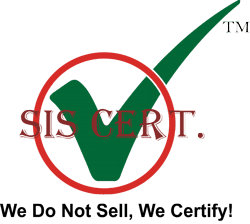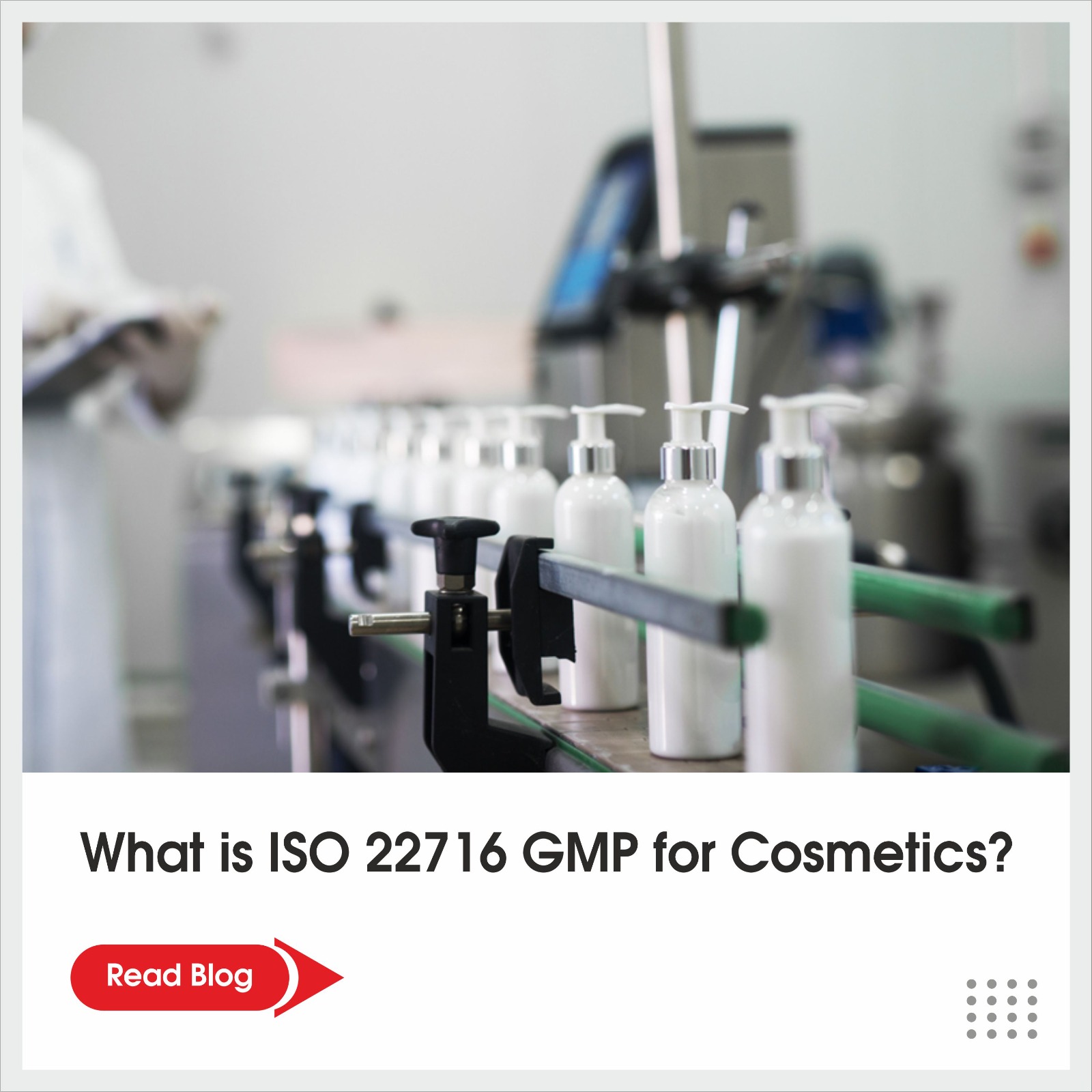ISO 22716 is a comprehensive set of GMP requirements for the cosmetics and personal care sector introduced in 2007. Cosmetics are commodities or materials designed to improve, cleanse, or change a consumer’s face or body, such as cosmetics, oral care products, lotions, deodorants, hair products, and scents. The ISO is a globally known non-governmental organization that develops standards for various businesses. In 2007, the International Cooperation on Cosmetic Regulations (ICCR), which was founded by the United States (US), Canada, the European Union (EU), and Japan, agreed that this standard would be used to suggest or publish cosmetic GMP standards for each country.
Why ISO 22716 is Crucial to Cosmetics?
ISO 22716 is a quality and management system that encompasses the entire beautification process, ranging from production to control, storage, and transportation of products including buying raw materials, components as well as packaging material.
Cosmetics are any substances applied to the face or body that are intended to beautify, cleanse, or change the colour, texture, smell, or taste of a user via make-up, creams, deodorants, hair products, and fragrances. Thus, makeup products are made from a mixture of chemical components built from natural substances or synthetic ones.
In the USA, the Food and Drug Administration (FDA), is the regulatory agency of the FDA. The Food and Drug Administration (FDA) determines cosmetics as those “that are specifically intended to be used on the human body for cleansing, beautifying, promoting attractiveness, and altering the appearance without affecting the body’s structure or functions”.
In the USA, the Food and Drug Administration (FDA), is the regulatory agency of the FDA. The Food and Drug Administration (FDA) determines cosmetics as those “that are specifically intended to be used on the human body for cleansing, beautifying, promoting attractiveness, and altering the appearance without affecting the body’s structure or functions”.
Advantages of having ISO 22716 GMP in your organization
- Lower liability risk: Certification enables you to demonstrate that you have taken all reasonable precautions to guard against or rectify mistakes and to preserve your legal rights.
- Enhanced trust among partners and customers: By obtaining certification, you can show your partners and customers that you have complied with regulatory requirements and establish your reputation as a reliable supplier of high-quality, safe cosmetic goods.
- Supply chain management: The certification of ISO 22716 offers reliable proof that you have examined and assessed the safety and quality protocols through the supply chain of your cosmetic goods.
- Enhanced business efficiency: By streamlining production procedures, you may accomplish your objectives faster and with more dependability.
EU Cosmetics GMP Requirements
GMP, or good manufacturing practice, requirements for cosmetics form the core of the EU Regulation on Cosmetics. This law, intended to safeguard consumer safety, imposes stringent requirements on all European and non-European parties engaged in the supply chain of cosmetic products. Despite these legal requirements, all cosmetic products manufactured in the EU have to follow the ISO 22716:2007 standard’s Cosmetics Good Manufacturing Practices. Proof that the items are created by ISO 22716 can be provided by the ISO 22716 certificate or a declaration attesting to that fact.
The following enumerates the domains for which ISO 22716:2007 stipulates certain requirements, together with their principal guidelines :-
The following enumerates the domains for which ISO 22716:2007 stipulates certain requirements, together with their principal guidelines :-
- Employees: employees should possess the necessary training to manufacture, oversee, and keep goods of a certain caliber.
- Premises: The location, layout, design, and use of the premises should guarantee product protection; allow for effective cleaning, sanitizing, and maintenance as needed; and reduce the possibility of product, raw material, and packaging unit mix-ups.
- Equipment: For equipment to be utilized for its original function, it must be able to be maintained, cleaned, and sanitized as needed. The equipment must be calibrated regularly in addition to being appropriately installed and cleaned. It should only be accessible and used by those who have been granted permission, and there should be enough backup procedures in place.
- Raw materials and packaging materials: raw materials and packaging materials that are purchased should meet defined acceptance criteria (physical, chemical, and microbiological) relevant to the quality of finished products. There should be proper measures and criteria in place for purchasing, receipt, identification and status, release, storage and re-evaluation of raw materials. The quality of water used in production should also be controlled.
- Production: steps should be performed at every level of the production and packaging processes to ensure that the final product has the specified qualities.
- Final products: The manufacturer must make sure that the products fulfil the specified acceptance criteria and are regulated using the approved test procedures before releasing them into the market. To preserve the quality of the final goods, care must be taken during storage, shipping, and return processes.
- Laboratory for quality control: The same guidelines that are outlined for staff, space, tools, subcontracting, and paperwork should also be applied to the lab. For materials to be released for use and products to be released for shipment, only when their quality meets the necessary acceptance criteria, the quality control laboratory must make sure that all relevant and necessary controls are carried out within its activity concerning sampling and testing.
- It is necessary to establish how a product that does not meet specifications is treated.
- Wastes: They need to be disposed of promptly and hygienically.
- Subcontracting: When it comes to subcontracting operations, a formal contract that is established, mutually confirmed, and controlled by both the contract giver and the contract acceptor is required.
- Deviations: Corrective action should be conducted after deviations have been found and enough data has been gathered about them.
- Recalls and complaints: The factory should evaluate, look into, and follow up on any concerns about the items that have been brought to their attention. Upon decision-making regarding a product recall, the necessary actions ought to be conducted to conclude the recall and execute the corrective measure. The procedure for handling complaints in contracted operations should be agreed upon by both parties.
- Change control: authorized staff must approve and carry out modifications that may have an impact on the product’s quality and do so only after gathering enough information.
- Internal audit: GMP implementation and status should be kept track of. Corrective measures should be suggested if needed.
- Documentation: An essential component of GMP is documentation. Depending on its organizational structure and product offerings, every business should have its document management system created, planned, implemented, and maintained. To avoid information loss, misunderstanding, etc., the documentation’s goal is to define the specified GMP activities.




